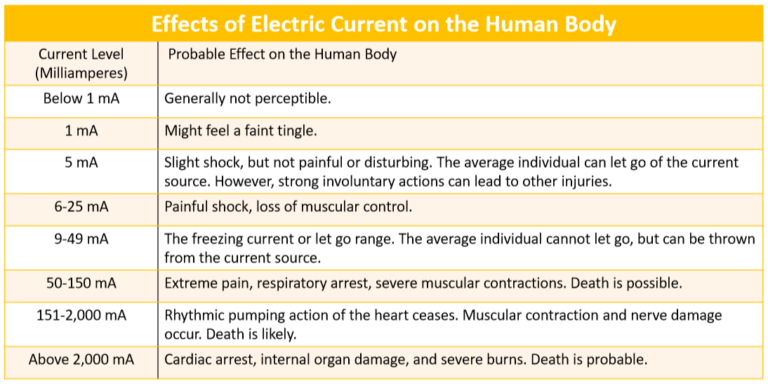Child electric shock injuries can occur in the blink of an eye. Turning away for just a moment to start dinner, paired with a toddler’s increasing freedom and natural curiosity can lead to extremely dangerous situations. Young children, particularly toddlers, are most at risk for electrical shock. For example, they most often experience electric shock injuries when they bite into electrical cords or poke metal objects just as forks, knives or screwdrivers into unprotect outlets or appliances. Further, child electric shock injuries can occur when a child is sitting or standing in water with electrical appliances around.
In the United States, electric shocks are responsible for approximately 1,000 deaths or 1 percent of all deaths. In order to prevent child electric shock injuries, it is extremely important for parents to take the necessary precautions.
What is Electrocution?
Electric shocks occur when electric currents pass through the body. The severity of the shock depends on several factors:
- the amount of current (amperage);
- the type of current (direct or alternating);
- the body’s resistance to the current;
- the current’s path through the body;
- And the amount of time the body remains in contact with the current.
Most children can tolerate a current of 3 mA to 5 mA. These numbers are much lower than the current generated by most circuit breakers—the electrical switch designed to interrupt the electrical flow—when there is an excess of electrical found in the home.

How do most child electric shock injuries occur?
Children account for approximately 20 percent of all electrical injuries. The incidences are highest among toddlers and adolescents. For children aged 12 years and younger, household appliance electrical cords and extension cords cause more than 63 percent of injuries. Wall outlets are responsible for 15 percent of electric injuries. However, in infants, putting metal objects in their mouths is the most common cause of electric shock injuries.
What type of damage do electrical injuries cause?
The human body is a great conductor for electricity. This means that electrocution can easily pass through the body. For many parents, this should be of particular concern when children are small. It goes without saying that electrical currents can be deadly. Even when electrical burns look insignificant, there can still be significant damage. For example, electric shock injuries can cause damage to the internal organs of a person who comes into direct contact with an electrical current. Electric currents passing through the body and cause damage in the following ways:
- Cardiac arrest
- Muscle, nerve and tissue destruction
- Thermal skin burns
- Head injuries from a fall after contact with electricity
What are the symptoms of child electric shock injuries?
Much like adults, the outward physical appearance of electrocution may be minimal. However, severe burns will appear on whichever part of the body touched the current source. Symptoms often depend on the strength of the voltage and how long the individual was in contact with the electrical current.
When electric shock occurs in young children or toddlers, it may be difficult or impossible for them to communicate or explain their symptoms. Generally, symptoms of child electric shock injuries that parents should look out for include:
- Severe burns on hands, heels or head
- Burns to the mouth that are red in appearance
- Shortness of breath
- Chest pain
- Abdominal pain
Burns are typically red or dark and charred appearance. Other injuries are possible if forceful muscular contractions throw the child from the electrical source.
What to do if my child is electrocuted?
When an electric shock occurs, it is important that you do not touch the victim while the current is still flowing. Doing so can also electrocute you.
If the electric shock happens in the home, immediately shut off the main power. If that cannot be done, and the current is still flowing through the child, stand on a dry, non-conducting surface, such as a folded newspaper or newspaper and using a nonconducting object such as a wooden broomstick or dowel rod, push the child away from the current source.
Immediately call for emergency medical help. If you are trained to perform cardiopulmonary resuscitation (CPR), immediately begin the process.
When should I seek treatment for my child electric shock injuries?
A person shocked by a high voltage (500 volts or more) should be evaluated in the emergency room or clinic. Any person present at the scene of the accident should immediately call 911.
Brief low voltage shocks (110-220 volts or less) that do no result in any symptoms or burns may not require care. However, it is important that parents consult with their healthcare provider if the child has any noticeable burns to the skin. Further, no matter how mild, parents should keep an eye the child experience numbness, tingling or vision, hearing and/or speech problems.
How does the doctor treat electrocution?
Again, the treatment for a child’s electric shock injury depends on the severity of the injuries. Doctors typically treat minor burns with topical antibiotic ointments and dressings. On the other hand, severe burns may require surgery to perform skin grafting or to clean the wounds. Further, severe burns on the arms, legs or hands may require amputation to remove damaged muscle or nerves.
What is the prognosis of electrocution?
The severity of the shock influences survival and long-term effects. Electric shocks cause death in 3-15 percent of cases. Infection is the most common cause of death in hospitalized victims following electrical injury. Electrocution can damage the brain, leading to permanent disorders such as seizures, depression, anxiety and other personality changes.
Importantly, low voltage shocks don’t usually produce the extreme damage found in higher, more severe shocks.
Preventing Child Electric Shock Injuries
Parents, guardians and child care providers must be aware of possible electrical dangers in the home. For example, you should replace or discard damaged electric appliances, wiring, cords and plugs. Your child should know not to use hairdryers, radios and other electric appliances in the bathroom. The appliances may accidentally fall into the water and lead to severe electrocution injuries.
Young children should be taught about the dangers of using extension cords and other electrical appliances around water. Further, they should be taught about the dangers of playing with electricity as early as possible. Parents and other adults around a child should never allow the child to play with any electrical cords or outlets. If young children are present in the home, cover all exposed electrical outlets with childproof outlet covers.
Teenagers share the same propensity for danger and curiosity as toddlers. For that reason, teens should be aware of the dangers of climbing on power towers, playing near transformers or exploring electrified train rails and other electrical systems.
The Carlson Law Firm Can Help
If you are the parent of a child who suffered electric shock injuries as a result of a negligent homeowner, business or child care provider, contact our firm today. The Carlson Law Firm has a qualified Electrocution Lawyer who can navigate the legal system on you and your child’s behalf. We can help you recover the costs of medical bills and other compensation as a result of your child’s injuries.
Contact our firm today to schedule a free consultation to discuss your legal options. We work on contingency fees and do not get paid unless we are successful with your case.





